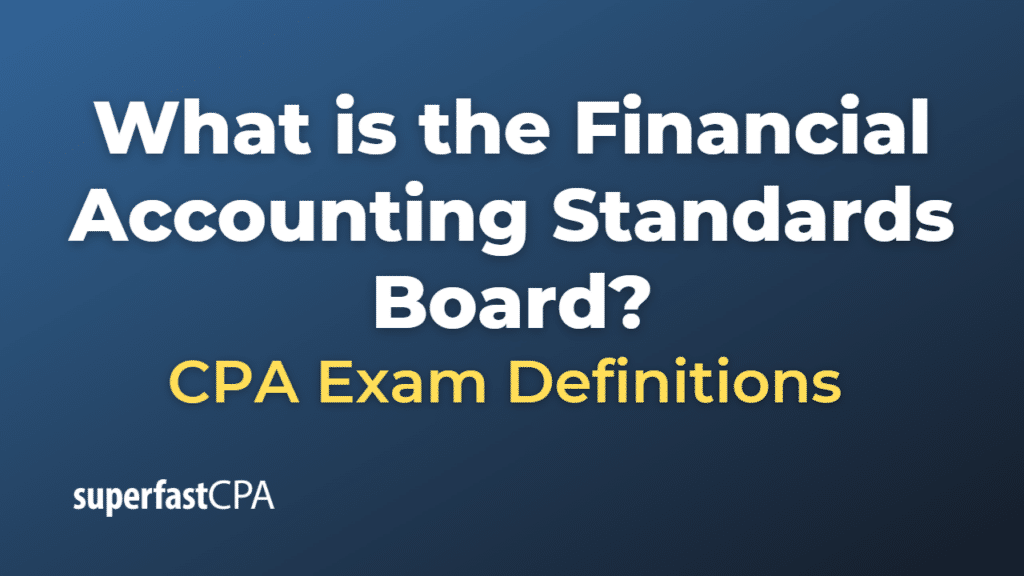Financial Accounting Standards Board
The Financial Accounting Standards Board (FASB) is a private, non-profit organization that establishes financial accounting and reporting standards in the United States. These standards, known as Generally Accepted Accounting Principles (GAAP), guide the preparation of corporate financial reports and are recognized by the Securities and Exchange Commission (SEC).
Established in 1973, FASB’s mission is to establish and improve standards of financial accounting and reporting that foster financial reporting by nongovernmental entities that provides decision-useful information to investors and other users of financial reports.
The FASB’s standards are recognized as authoritative by many other organizations, including state Boards of Accountancy and the American Institute of CPAs (AICPA). The FASB develops and issues standards through a process that includes exposure of proposed standards to public comment.
The Board is composed of seven full-time members, who are required to sever all ties with the firms or institutions they served before joining the FASB. This requirement is intended to ensure the impartiality and independence of the Board.
The FASB is part of a structure that is independent of all other business and professional organizations. This structure also includes the Financial Accounting Foundation (FAF) and the Financial Accounting Standards Advisory Council (FASAC). The FAF is responsible for overseeing, funding, and selecting the members of the FASB. The FASAC advises the FASB on strategic issues, project priorities, and other matters that affect standard setting.
Example of the Financial Accounting Standards Board
Let’s look at an example of how the Financial Accounting Standards Board (FASB) impacts financial reporting.
One of the significant changes issued by the FASB is the update to the revenue recognition standard, ASC 606 – Revenue from Contracts with Customers. This standard was issued in May 2014, and it changed the way companies recognize revenue from customer contracts.
Before this standard was introduced, there were various different models for recognizing revenue, which sometimes led to inconsistent reporting among companies. The goal of the new standard was to streamline the process of revenue recognition and make it consistent across industries.
Under ASC 606, companies follow a five-step model to recognize revenue:
- Identify the contract with a customer.
- Identify the performance obligations in the contract.
- Determine the transaction price.
- Allocate the transaction price to the performance obligations in the contract.
- Recognize revenue when (or as) the company satisfies a performance obligation.
Let’s consider a simple example:
A software company, TechSoft Inc., enters into a contract with a customer to provide a software license and one year of customer support for a total price of $1200. In this case, TechSoft would identify two separate performance obligations: providing the software license and providing customer support.
If TechSoft estimates the standalone selling price of the software license as $1000 and the customer support as $300, it will allocate the transaction price ($1200) between the two performance obligations based on their relative standalone selling prices.
This results in $857 allocated to the software license ([$1000/$1300] x $1200) and $343 to the customer support ([$300/$1300] x $1200). TechSoft would recognize the $857 as revenue immediately upon transferring the software license to the customer, while the $343 would be recognized as revenue evenly over the year of providing customer support.
This is a simplified example, and actual situations could be much more complex, but it shows how FASB’s standards guide the process of financial reporting.













